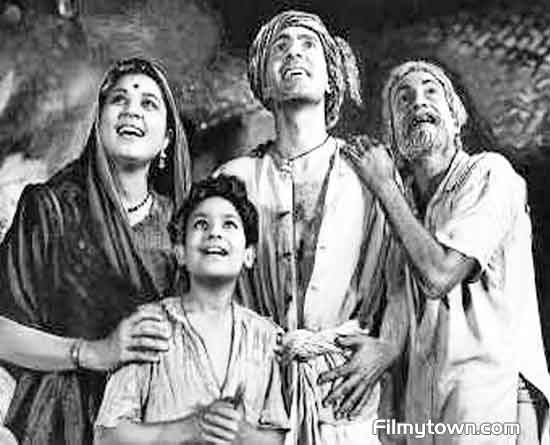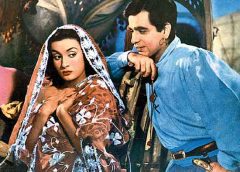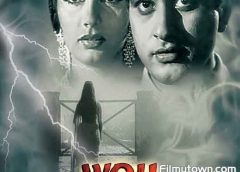Do Bigha Zamin was a ground-breaking movie which reflected the true ground realities of rural India of the time and features in many an all-time great movies list of India. Though India was free but young India was still grappling with the colonial and zamindari mindset which made the zamindars the absolute owners of the rural India and even controlled the lives of the small and distressed farmers.
Though instruments of justice were in place but they were heavily loaded in the favor of the rich and the powerful as they could bend things as they liked, even playing with the lives of the peasants and farmers who were dependent on their compassion and help for even small occasions in their lives as they were totally unprepared for any incidental or expenses as they had no fallback income of their own and were self-sufficient to the extent of producing and consuming their own food but looked up to the zamindars or the rich land lord farmers for this extra expense and then they would come under their obligation and permanent debt which they were never able to payback.
This has similar echoes in Mother India but there’s where the similarity ends. This social injustice was aptly captured by the great Bimal Roy. As Satyajit Ray catered to the stories of the middle class and its struggles, Bimal Roy championed the cause of the downtrodden and realistic cinema giving a jolt to the make believe world of cinema. This can be called as the pioneer of the parallel or art cinema of the time which was more in sync of the realities of the time. Roy extracted a once in a lifetime performance from the lead protagonist in the movies played by Balraj Sahni who had more of an uber-rich image. It may come across as depressing due to the plight of the exploited small rural farmers who had meager resources and land on which they subsisted but also gives a message of hope for the same breed as they migrate to the big bad cities and try to make a room for themselves. As the title suggests ‘Bigha’ is a traditional unit of land area measurement used in India and has no standard measure though it is considered lesser than an acre which is now a common unit of measurement. The movie was released on 16th January 1953 it did garner some success at the Box office too. It is said to have been inspired by the realism of the Italian cinema as seen in movies like the Bicycle thieves of the ‘40s. it was released in China and the USSR due to its socialist theme.
Do Bigha Zamin is the story of a poor farmer Shambhu Mahato (Balraj Sahni) and his family consisting of wife Paro (Nirupa Roy) and son Kanhaiya (Ratan Kumar) and father Gangu, of a small village somewhere in the eastern part of India of the time. The local Land lord Thakur Harnam (Murad) has designs to build a factory in the village and there by profit from the venture and bring about a general well-being to the village. There is a problem though as his plot on which the factory has to come up, Shambhu’s 2 bigha plot sits right at the centre of it. As Shambhu is indebted to him, the Land lord is sure of getting round this problem and buy it over not expecting Shambhu of vehemently opposing it as he considers the land as his own mother and goes to court when he finds out that the amount that he has to pay back is not Rs.65 but Rs.235, due to the conceited accountant of the Thakur who does not recognize the labour provided by the family as part of the payment, which he cannot payback even after selling off his house hold items and his wife’s gold earrings.
Shambhu loses the case in the court due to his naivety and is ordered to pay off the amount within three months lest his land will be auctioned after that. On an advice he decides to go to Calcutta to earn the money so that he can pay off the debt. Without support in a big-bad metro and also to take care of his son who has tagged along he gets a jolt of big city reality when even their last bit of belongings are stolen. Helped by some sympathetic poor people he tries to firm his foot-hold and works as a coolie to pay rent and subsist. He is helped by a kindly rickshaw puller to get a license for it as things start settling and the time is coming near for the three month period to end an incident happens where is he asked by a man to chase the rickshaw of his girlfriend and keeps wagering an increase to his rickshaw pulling fees egging him to go faster and catch-up, in this excitement of the situation Shambhu losses control and meets with an accident. In the meantime having not heard from her husband Paro decides to visit him in the city and herself is confronted with a wily person and ends up in an accident herself while escaping. To save his wife Shambhu has to spend all that he had saved all this while. Unable to pay-off the debt his land is sold off in village, which Shambhu realizes when he comes back to the village with his family only to see a factory being under construction on the said plot. He is even desisted to take a handful of mud from his land as the movie ends with the family slowly moving away.
The movie Do Bigha Zamin captures the pathos of the poor villagers and the ethos of the time. It was one of the rare movies where Meena Kumari did a special appearance and the famous lullaby ‘Ajaa ri aa’ was picturized on her. Do Bigha Zamin went on to win the first Filmfare Award for the best movie and an International Prize at Cannes and also the All India Certificate of Merit for best Feature Film. It was based on Music composer Salil Chowdhary’s short story (he also scored the music for the film).
Balraj Sahni began his preparation for the role in Do Bigha Zamin by actually pulling rickshaw on Calcutta streets and interacting with other rickshaw pullers. The rickshaw chase scene in now considered as epic and is shown in many snippets about past movies and also symbolizes the insensitivity of urbanization where everything can be bought by money. The songs and music were excellent with great farm visuals specially ‘Dharti Kahe Pukaar ke’ inspired by the Red Army marching tune and a movie of the same name was also made in the later years.
– Revisited by PAWAN GUPTA





